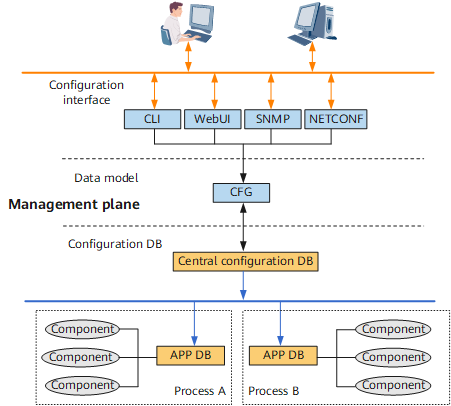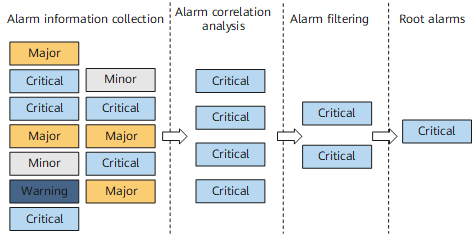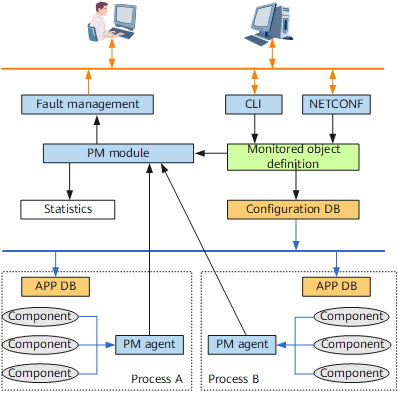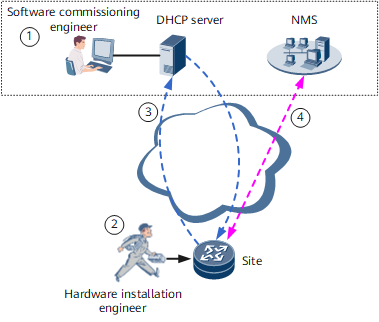VRP8 Carrier-Class Management and Maintenance
Configuration Management
As shown in Figure 1, the VRP8 management plane adopts a hierarchical architecture, consisting of the following elements:
- Configuration tools
- Configuration information model
- Configuration data
- Support for various existing configuration tools and more
- Implementation of model-based configuration
- Data verification and configuration rollback
- Database-assistant configuration data recovery
A configuration interface layer provides various configuration tools. A configuration tool parses a configuration request and then sends the request to a Configuration (CFG) component. The CFG component uses a pre-defined configuration information model to perform verification, association, and generation of configuration data. After a user commits a configuration and the configuration is successfully executed, configuration data is saved in a central database. A process-specific APP database obtains the configuration information from the central database.
The VRP8 supports two-phase configuration validation and configuration rollback.
Fault Management
As shown in Figure 2, the VRP8 implements fault management based on service objects. The VRP8 creates a service object relationship model to analyze the correlation between alarms, filter out invalid alarms, and report root alarms, speeding up fault identification.
Performance Management
As shown in Figure 3, the VRP8 provides a flexible performance management mechanism. Information about an object to be monitored, including a description of the object and a monitoring threshold, can be manually defined on a configuration interface. The configuration data can then be delivered by the central database. The APP component collects statistics about the configured object and sends them to a performance management (PM) module through a PM agent. After receiving the statistics, the PM module generates information about a fault based on the pre-defined object and monitoring threshold and then sends the fault information to the network management system (NMS) through the fault management center. Performance information can be viewed by running a command or through the NMS.
Plug-and-Play
As shown in Figure 4, VRP8 plug-and-play allows a great number of devices to be deployed on a site at a time and to be managed and maintained in remote mode, reducing OPEX.
Devices supporting VRP8 plug-and-play are deployed as follows:
- Software commissioning engineers import IP addresses and names of devices to be deployed to a DHCP server.
- Hardware installation engineers install devices and power them on.
- Devices automatically apply for IP addresses and initial configurations and the DHCP server assigns IP addresses and delivers initial configurations.
- The devices report their presence to the NMS and the NMS detects the devices online. Then the commissioning engineers remotely commission the devices and configure services.



